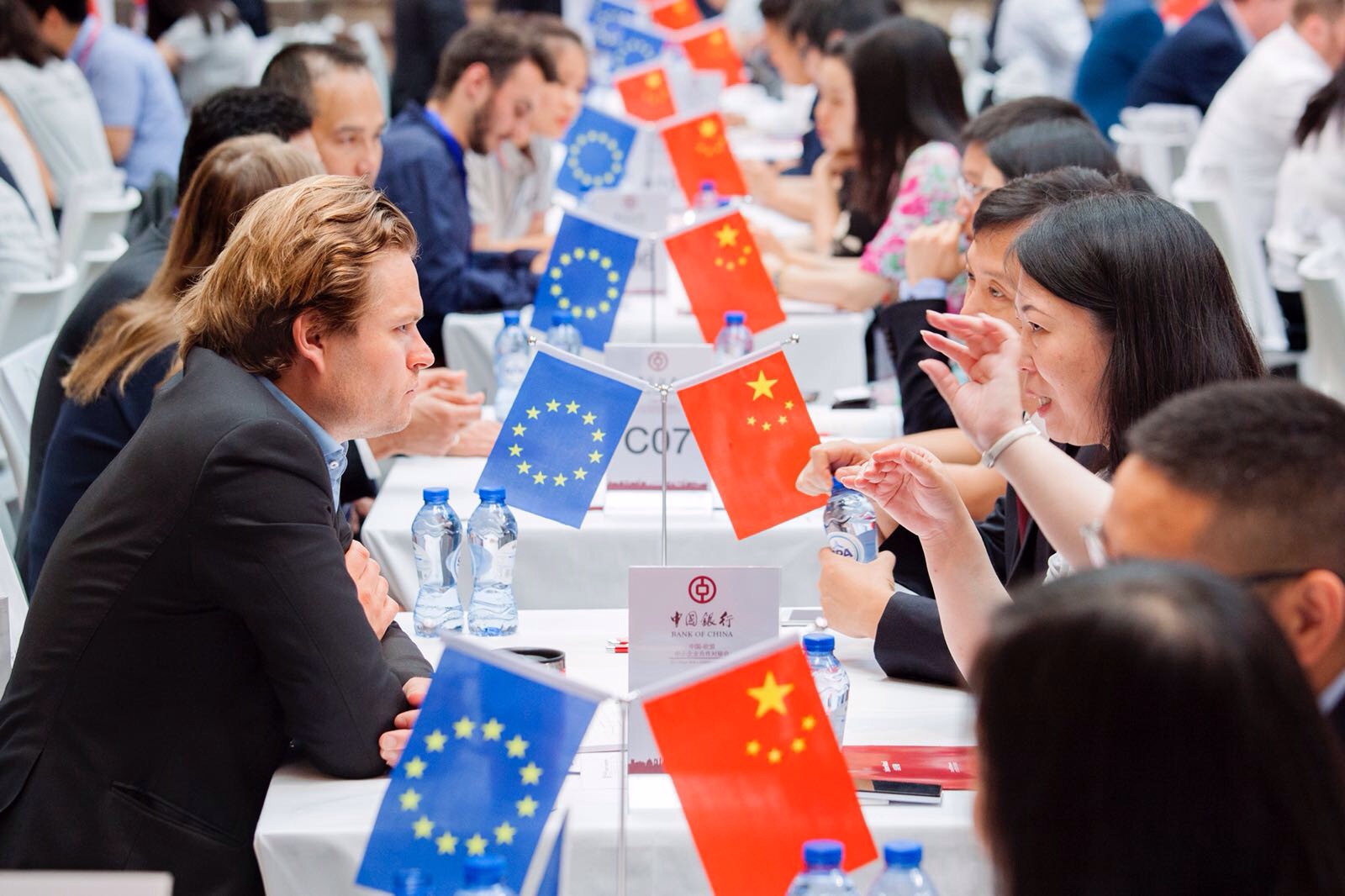Synopsis on the finalized negotiations of the EU-China Comprehensive Agreement on Investment

On December 30, 2020, the European Union (EU) and China marked a new level of engagement with the completion of negotiations on the Comprehensive Agreement on Investment (CAI). As agreed during the joint virtual conference between the heads of member states, once signed and ratified, the CAI is expected to expand investment opportunities for both European and Chinese businesses by replacing 26 existing bilateral investment treaties between 27 individual EU member states and China [Taylor, 2021]. Given that, according to their trade statistics, approximately one billion euros of goods circulate between the EU countries and China every day, the expansion of opportunities for investment has multiple implications not only for the participating member states but also for the future of the global economy.
Through the CAI, the EU seeks to establish new rules that enable building a new type of globalization, which the EU has long been targeting. Namely, by removing barriers for European investments in certain industries in China, the EU seeks to ensure greater access to the Chinese market that subsequently allows establishing rules that discipline the behavior of Chinese state-owned enterprises (SOE) secure openness of subsidies, and promote sustainable development [Baruzzi,2021]. In other words, the guarantee of protection of foreign investors’ rights and interests at the international level, provided by the CAI, enables other stakeholders to work within the new environment in China. With EU companies facing much more restrictions for investments in China, in comparison to the already open market of the EU, the CAI seeks to provide unprecedented mutual access for investments. The main obstacle to achieving necessary reciprocity in bilateral investments is the regulations of China, which, according to the Organization for Economic Cooperation and Development (OSCE), is considered one of the most restrictive foreign direct investment (FDI) regimes in the world [Harper, 2020].
China, on the other hand, sees the CAI as its geopolitical leverage, especially when the Biden administration in the US has already demonstrated its plans to put pressure on China over issues such as human rights records and aggressive trade practices [FT, 2021]. For China, this is also one more step towards opening its market for foreign companies, along with its commitment to the ratification of the International Labor Organization (ILO) conventions and sustainable development – this speaks about China’s intentions to position itself as a reliable partner. China has agreed to open new industrial sectors with significant overcapacity. Taking into account that more than half of the EU’s investments in China are concentrated in the manufacturing sector, the agreed conditions will open considerable opportunities for European companies. In particular, the CAI obliges to open the manufacturing of automobiles (traditional and electric vehicles), production of transport and health equipment and production of chemicals sectors. In the service sector, financial, international maritime, environmental, construction, computer, auxiliary air transport, cloud and private health services are expected to be opened. In the non-services sectors, some liberalization would affect agriculture, fisheries, mining and energy sectors. As for the EU, since the EU market is already open for services sectors under the General Agreement on Trade in Services (GATS), areas such as energy, agriculture, fisheries, audio-visual and public services will be expanded under the CAI [Baruzzi, 2021]. At the same time, China has commitments under the US-China Economic and Trade Agreement (ETA), which is expected to hit the EU manufacturing sector due to a commitment to import up to 48% more goods from the US in 2021 [European Parliament, 2020].
Overall, the CAI, initiated by Germany and France seven years ago, has six sections, including market access; a regulatory framework that has domestic regulations, transparency and financial services; investment and sustainable development; and institutional provisions [European Commission, 2021]. Although the text has been published for discussions, the final decision will be available once the parties sign the treaty for further ratification.
Meanwhile, despite the fact that the preferences will be given to European companies, not many Europeans are happy with the deal. Europeans are concerned that the CAI undermines the so-called European values and norms. In particular, there are concerns about the use of forced labor of Muslim Uyghurs in Xinjiang. In defense of such claims, Beijing is committed to ratify the ILO conventions to prevent such allegations. Another concern is the issue of migration of Chinese workers to the EU and the overcapacity of Chinese workers in Chinese companies, with a possible stay of up to three years [Tyler, 2021]. Nonetheless, the CAI is expected to be the first agreement to expose the behavior of Chinese SOEs and obtain transparency rules for subsidies.
In current affairs, the EU’s foreign direct investment (FDI) in China has been declining due to the factors such as poor investor protection and difficult market access that hinder the participation of European investors in China. Moreover, the required joint ventures in the majority of sectors threaten the theft of intellectual property and technology transfer to China that also challenges the enlargement of European investments in China [European Parliament, 2020]. As a result, these issues have led to a disproportionately low amount of FDI flows. If the bilateral trade amounted to around US$650 billion in 2019, EU’s FDI to China over the last 20 years reached more than US$170.24 billion, and Chinese FDI amounted to about US$145.92 billion. At the same time, the EU-China trade interdependence is significant, considering that the EU is China’s largest trading partner and China is the EU’s second-largest trading partner after the US [Taylor, 2021]. However, the EU’s trade deficit with China has been growing, for instance from 2000 to 2018, the deficit increased from US$49 billion to US$300 billion, which is equal to 2% of EU’s GDP. Yet, in comparison to the US, the EU’s trade deficit with China is much lower. In terms of the trade in services, China’s trade in services have been developing slowly, but it still remains EU’s third-largest trade in services partner after Switzerland and the US [European Parliament, 2020].
It follows from this that the CAI, in fact, has every reason to change the current investment policy. Considering that China, as the second-largest economy in the world, with huge potential in the manufacturing and supply chain, is changing its rules for European countries, there is certainly transformation of business with China. Consequently, the expected changes in China’s import policy towards the United States and investment policy with the EU will lead to significant changes in China’s trade and manufacturing industry. Given that China has recently succeeded with the Regional Comprehensive Economic Partnership (RCEP), the CAI with the EU seems like a logical continuation of China’s policy towards transforming its policies to be more open to foreign trade and institutionalize emerging changes.
References:
Baruzzi, Sofia (2021). EU, China Reach Agreement on Investments in Principle: What Does it Mean for Businesses. Retrieved from https://www.china-briefing.com/news/eu-china-reach-agreement-on-investments-in-principle-what-does-it-mean-for-businesses/. Accessed on 12.02.2021.
European Commission (2021). EU – China Comprehensive Agreement on Investment (CAI): list of sections. Retrieved from https://trade.ec.europa.eu/doclib/press/index.cfm?id=2237. Accessed on 12.02.2021.
European Parliament (2020). EU-China trade and investment relations in challenging times. Policy Department for External Relations. Directorate General for External Policies of the Union. PE 603.492 – May 2020. Retrieved from https://www.bruegel.org/wp-content/uploads/2020/06/EXPO_STU2020603492_EN.pdf. Accessed on 12.02.2021.
FT (2021). What is in the EU-China investment treaty? Retrieved from https://www.ft.com/content/8b810ff7-457d-46a3-8ec8-4ac52f6f1862. Accessed on 12.02.2021.
Harper, Jo (2020). EU-China investment deal done and dusted. Retrieved from https://www.dw.com/en/eu-china-investment-deal-done-and-dusted/a-56087516. Accessed on 12.02.2021.
Taylor, Paul (2021). In defense of the EU-China investment deal. Retrieved from https://www.politico.eu/article/europe-at-large-eu-china-investment-deal/. Accessed on 12.02.2021.
Tyler, Robert (2021). The EU-China investment agreement is a disaster for the West. Retrieved from https://www.neweurope.eu/article/the-eu-china-investment-agreement-is-a-disaster-for-the-west/. Accessed on 12.02.2021.
Note: The views expressed in this blog are the author’s own and do not necessarily reflect the Institute’s editorial policy.
Albina Muratbekova
Senior Research fellow
Dr. Albina Muratbekova is a research fellow at the Eurasian Research Institute of Akhmet Yassawi Kazakh Turkish International University. Albina holds a PhD degree in Oriental Studies from Al Farabi Kazakh National University. During her studies, Albina received fellowships from institutions in China, India, the USA, the UK, Germany, and Switzerland. Her primary research interests cover Central, East, and South Asian affairs; intraregional and interregional cooperation of Central Asian states; China-India relations; and Central Asian politics.

